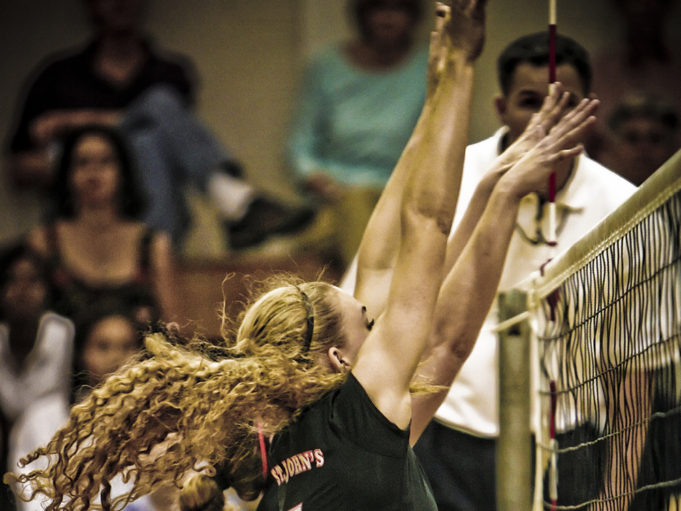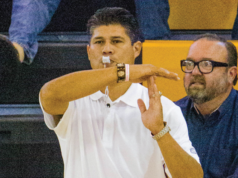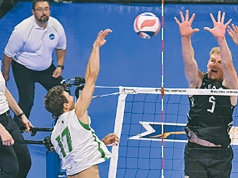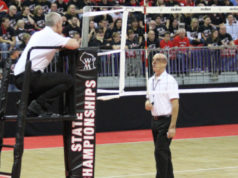Once we obtain an officiating certification, it seems that many of us want to jump in and start working the highest levels of play we can find — a high school varsity match, the 18 Open gold final at a USAV juniors’ tournament or a top-level collegiate match. What our egos won’t let us believe is that we may not have the skills or experience to work that level of play yet.
But what if you do have the experience and skill? You might be a veteran who feels you deserve the top assignments, and working anything less should be left for those who aren’t at your level (or the level you think you are). After all, how can those lower levels of play help improve your game?
Whether you’re a veteran or a newbie, embrace lower levels of play. Working those levels will help you be a better official. Yes, the pace may be a little slower and the players’ skills may not be well-developed yet, but there is experience to be gained if you approach those matches with the right attitude.
First, it goes without saying that regardless of the level of play, from 12-year-olds to NCAA Division I, the teams deserve your best. The match is important to them, and they’ll be able to tell if it doesn’t seem as important to you. Give each match the same attention, focus and effort that you’d give if it were a conference or league championship or a gold medal final, or if you were being watched by your assigner, conference supervisor or someone who could help your officiating career. You never know who’s watching.
Work on your match tempo.
The ball is probably being served, passed and attacked at a slower pace. Players may not have the speed or agility as at higher levels of play or with more experienced teams. Use that as an opportunity to develop a consistent rhythm within the flow of the match. Strive for consistency with the time between rallies, i.e., the time from the end of one rally until you whistle for the next serve (roughly 10-15 seconds) without interruptions.
Develop a scanning routine as first referee, and use it before every service beckon.
Do the same with your scan at the end of each rally as you look for information from your crew. Also, work on signal cadence and timing as both first and second referee. At the end of each rally, hold the loss of rally signal for a “one-thousand one, one-thousand two” count, and then do the same with the fault signal. Strive to maintain that cadence for the entire match. And be sure to use a 1-2-3 sequence as first referee to ensure your whistle is clearly separated from the point signal (and service beckon), and the point signal is separated from the fault signal. Second referees should do the same when initiating fault calls. That will ensure the result of each rally is communicated clearly. The teams and your officiating crew will become accustomed to that pace and match tempo.
Fine-tune your signals and mechanics.
When working a junior high match or 10-12 year-old juniors’ tournament, there may not be as much tight net play or as many back-row faults that require your constant focus. So instead, focus on crisp, clean signals. And if there’s a mechanic or technique that you need to hone, a match with less pressure is a good place to get some practical experience and develop good officiating habits.
Lastly, especially with our younger age groups, work on your overlap/alignment recognition.
We often find that the younger kids, whether junior high or club ball, often need some help staying in their rotational order, so it may be a good time for you to work on that as well. Find a memorization method that works for you, and fine-tune your back-row awareness and player positioning.
Each match is an opportunity to improve your game, so don’t let the level of play discourage you from turning it into a chance to learn and fine-tune your skills, and to make it a great experience for the teams. And remember veterans, the teams will appreciate having your experience on the court!
What's Your Call? Leave a Comment:
Note: This article is archival in nature. Rules, interpretations, mechanics, philosophies and other information may or may not be correct for the current year.
This article is the copyright of ©Referee Enterprises, Inc., and may not be republished in whole or in part online, in print or in any capacity without expressed written permission from Referee. The article is made available for educational use by individuals.


















